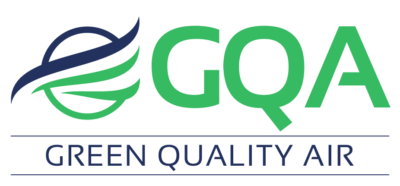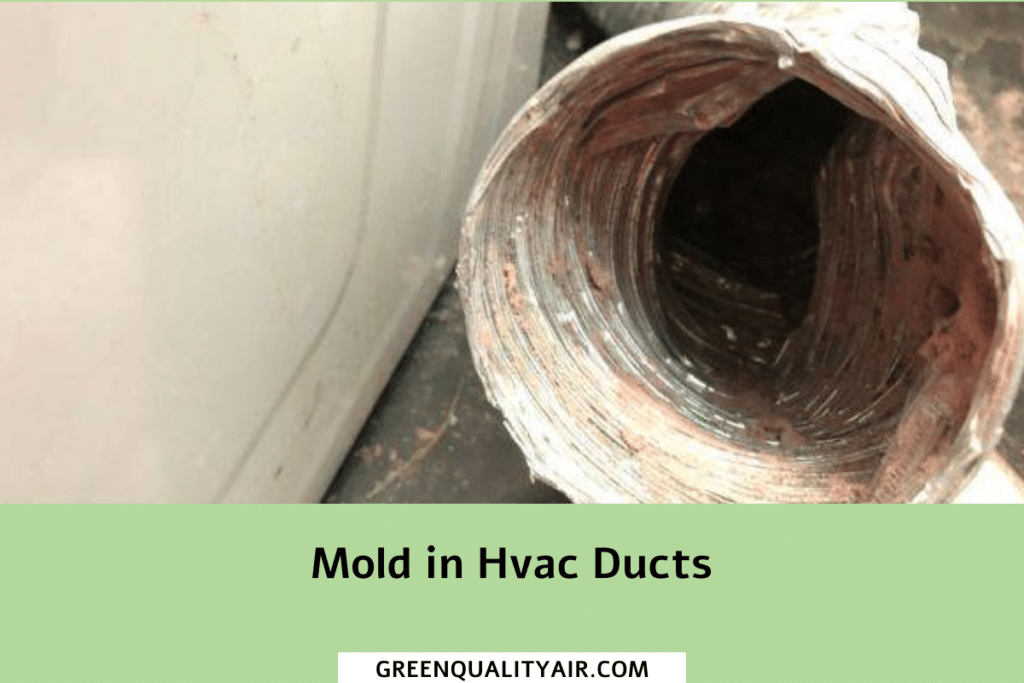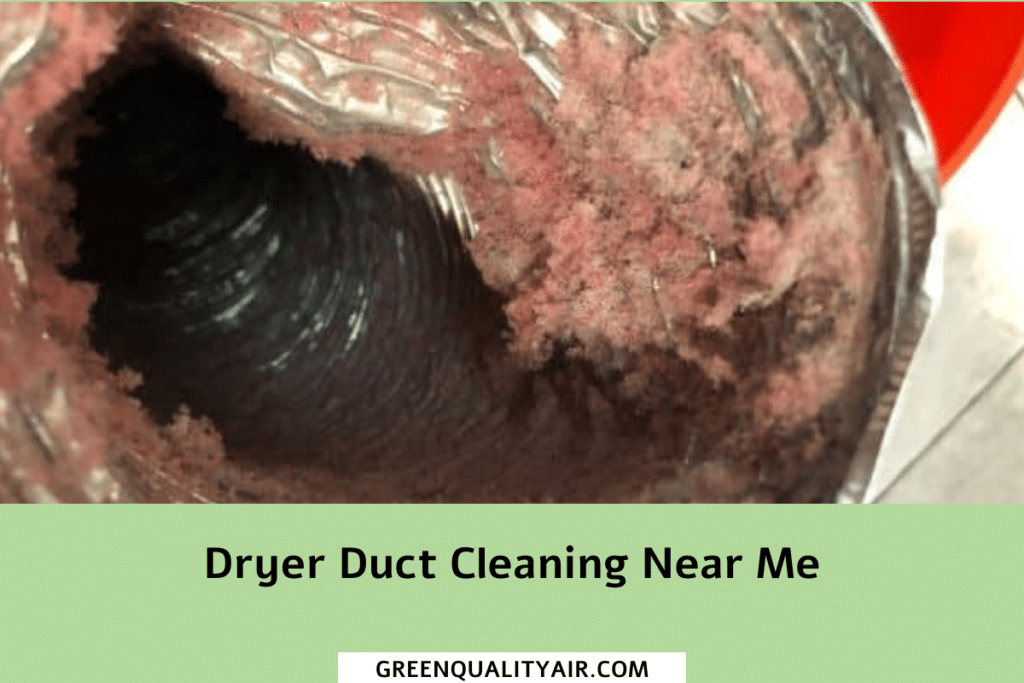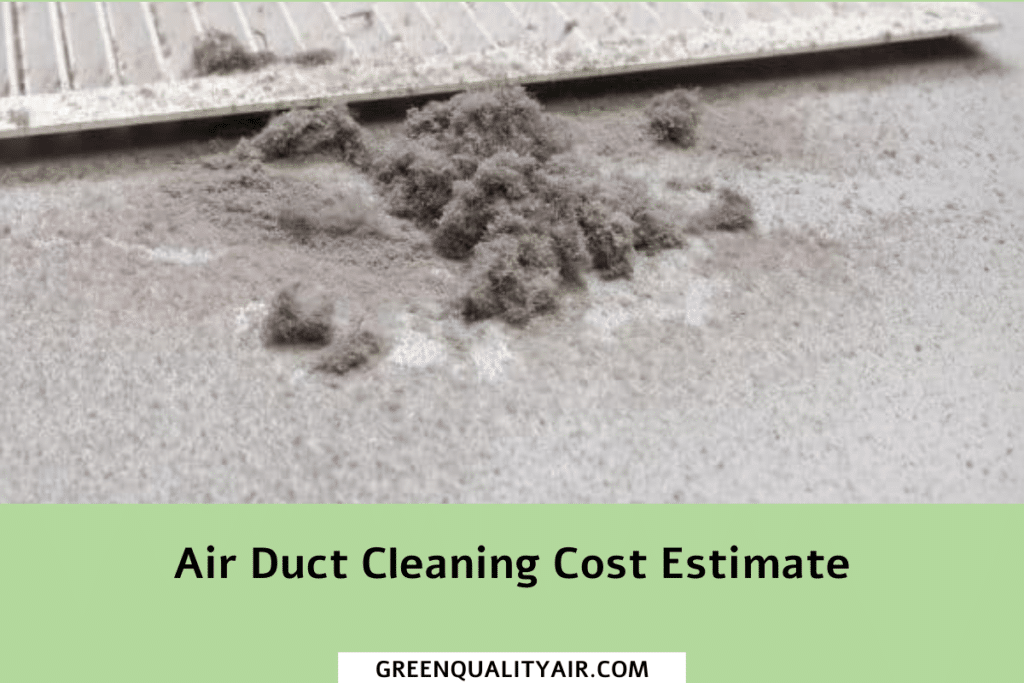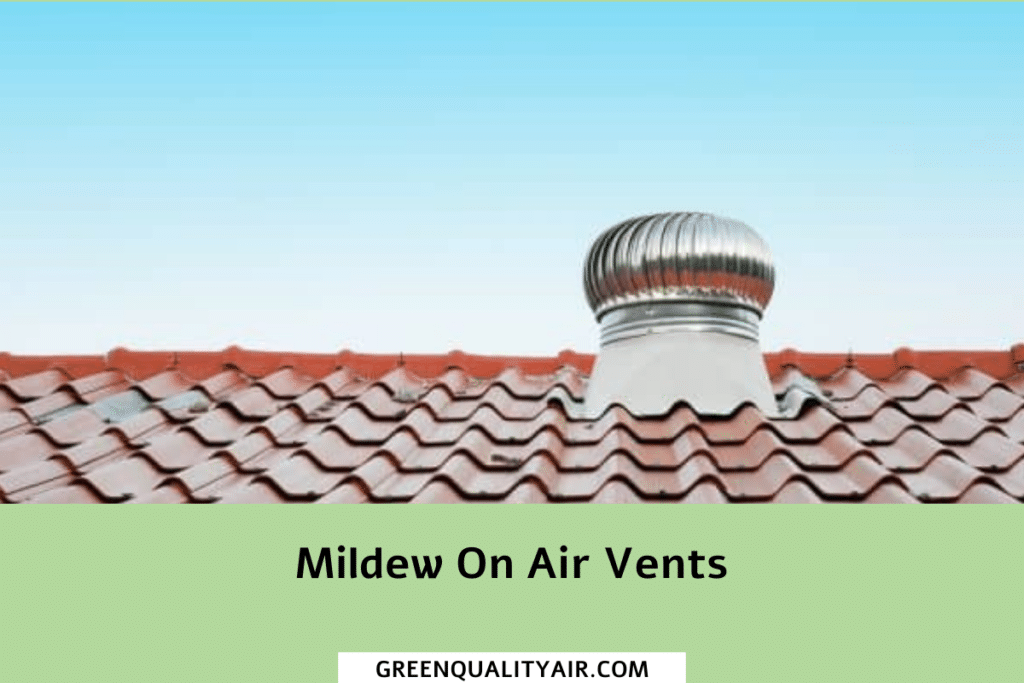When it comes to home maintenance and comfort, HVAC ducts are a critical component. Not only do they help ensure temperatures remain stable indoors, but they also circulate air throughout your house—which is especially important if you’ve got allergies or asthma. Unfortunately, another thing can be lurking in those ducts: potentially harmful mold growth.
If left unchecked, the presence of this fungi could lead to health issues ranging from coughing and sneezing to more serious respiratory problems. In order to protect yourself and your family’s health, it’s essential to inspect for mold on a regular basis—and today we’ll discuss what causes them in ductwork and some potential solutions so you can rest easy that all is safe and sound inside your home!
What is mold and why it's important to keep it out of your home
Mold is a type of fungus that can grow in damp and humid environments. It can spread through spores and can cause health problems to people, especially those with respiratory conditions. Mold can also develop in HVAC ducts, which can be a problem since air is circulated throughout the house.
Thus, it is important to keep mold out of your home to maintain good indoor air quality. Make sure to address any leaks or water-related issues right away and to properly ventilate areas prone to moisture, such as bathrooms and kitchens. Regular inspections and maintenance of your HVAC system can also prevent any mold growth in your ducts.
By taking these preventative measures, you can ensure that your home is a healthy and safe living environment for you and your family.
Contact Us
How to check for mold in your ducts
Mold in HVAC ducts can be a major problem if left unchecked. Not only does it cause unpleasant odors, but it can also trigger allergies and respiratory problems. Checking for mold in your ducts is crucial to maintaining a healthy indoor environment. One way to do this is by visually inspecting the ducts for any signs of mold growth.
However, mold can also grow inside the duct system, making it difficult to detect. In this case, it’s best to hire a professional HVAC technician who can use specialized tools to detect mold growth and conduct an air quality test. Taking action to prevent and remove mold in your ducts can bring peace of mind and a cleaner, healthier home for you and your loved ones.
Symptoms of mold exposure and how to treat them
Mold exposure can lead to a variety of health problems. When the mold grows in your HVAC ducts, it can spread quickly throughout your home, causing a disturbing array of symptoms including respiratory issues, allergies, and even skin irritation. Unfortunately, these symptoms can be difficult to pinpoint, and many people do not realize they are suffering from mold exposure until it has become a widespread problem.
If you suspect that mold is affecting your health, it’s important to seek medical attention right away. Treatment may involve medication, lifestyle changes, or the removal of the mold itself. By taking action quickly, you can ensure that you and your family stay healthy and safe.
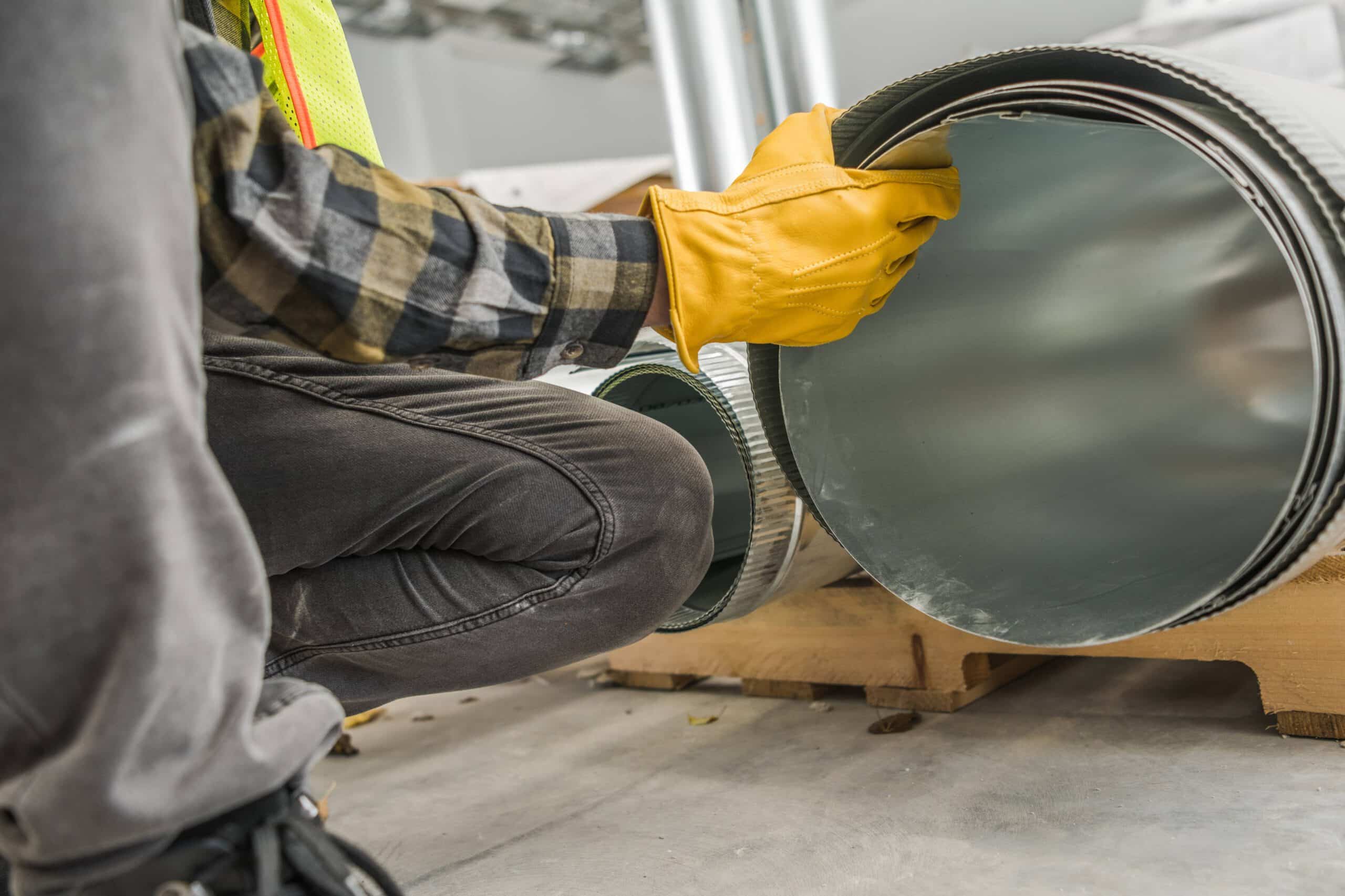
Prevention methods for avoiding mold in the future
If you’ve ever dealt with mold in your home before, you understand how frustrating it can be. Not only is it unsightly, but it can also be hazardous to your health. One area that often gets overlooked when it comes to the prevention of mold is your HVAC ducts. These ducts are responsible for circulating air throughout your entire home, which means that if mold starts to grow inside of them, it can spread quickly.
To prevent this from happening, it’s essential to practice preventative measures. One of the best prevention methods for avoiding mold in your HVAC ducts is to ensure that they’re properly insulated and regularly cleaned. Additionally, it’s a good idea to invest in a dehumidifier to help control the humidity in your home, as high levels of humidity can often lead to mold growth. By taking these steps, you can rest assured that your home is safe and mold-free.
More Articles
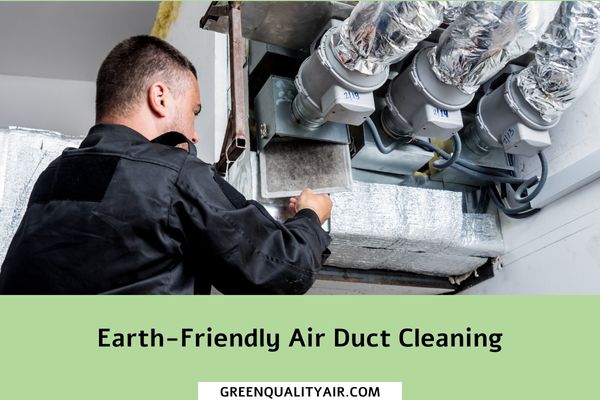
Earth-Friendly Air Duct Cleaning: Sustainable Solutions for Clean, Healthy Air
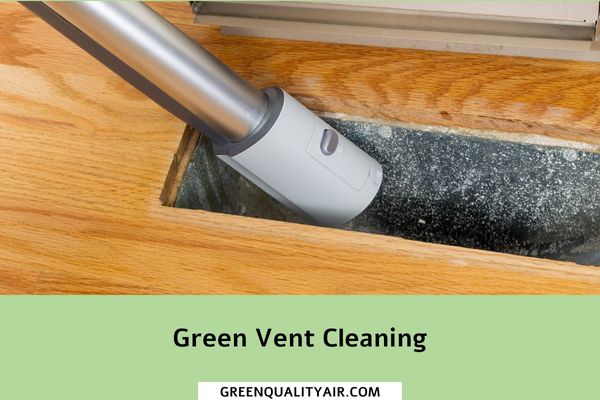
Green Vent Cleaning – A Comprehensive Guide to Sustainable and Effective Ventilation Maintenance
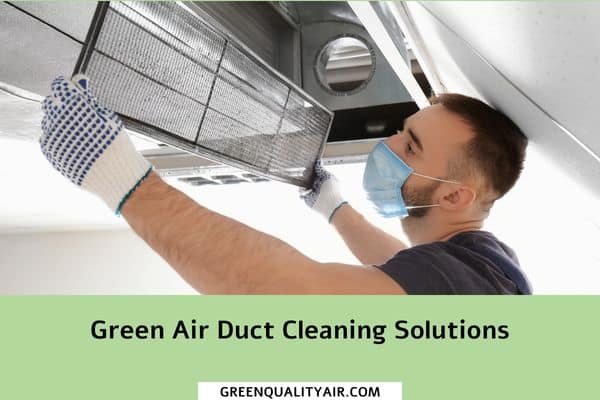
Breathe Easy with Green Air Duct Cleaning Solutions

Earth-Friendly Air Duct Cleaning: Sustainable Solutions for Clean, Healthy Air
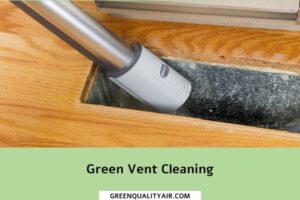
Green Vent Cleaning – A Comprehensive Guide to Sustainable and Effective Ventilation Maintenance
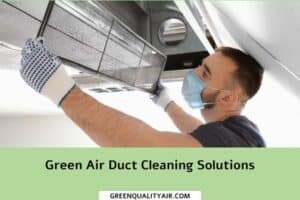
Breathe Easy with Green Air Duct Cleaning Solutions
How often should you inspect your ducts for mold
Mold is never a welcome guest in any household – especially not in your HVAC ducts. It’s not just unsightly, but it can also pose a health risk to the people living in your home. It’s important to inspect your ducts for mold regularly to avoid the risk of illness.
The frequency of these inspections can depend on several factors, such as the age and condition of your HVAC system, the climate you live in, and whether or not your home experiences high humidity levels. It’s generally recommended to inspect your ducts for mold at least once a year, but if you notice any signs of mold growth like a musty smell or visible fungi, it’s time to take action and call an HVAC professional to assess the situation.
By staying vigilant and keeping an eye out for potential mold growth, you can ensure that your home is a healthy and safe environment for you and your family.
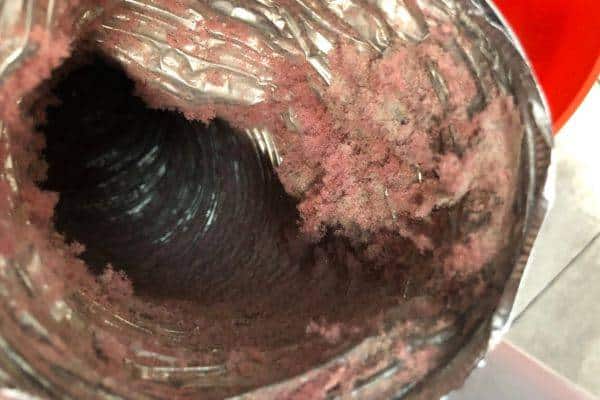
Tips on hiring a professional to remove existing mold from your HVAC system
Mold in HVAC ducts can be a serious health hazard that needs to be addressed immediately. Hiring a professional to remove existing mold from your HVAC system can be a daunting task. However, it is important to find a skilled technician who can identify the location of the mold growth, determine the severity of the problem, and create a plan to effectively remove it from your ducts.
When looking for a professional, make sure to do your research and ask for referrals from trusted sources. It is also important to ask about their qualifications, certification, and experience in handling mold remediation in HVAC systems. A reliable professional will not only remove the mold but will also provide recommendations on how to prevent it from growing again in the future. Trusting a professional with the job not only ensures your safety but also peace of mind.
In conclusion, mold is a dangerous air pollutant that can cause significant harm to your home and health, so it is important to take all necessary steps to ensure you are protecting your family and property from its effects. Regularly checking for mold in your HVAC system, understanding the symptoms of mold exposure, and taking preventative measures are all important steps in avoiding having a mold problem in the future.
Though some people may be confident enough in their own abilities to seek out the mold on their own, it’s best practice to hire a professional if your HVAC system has been exposed to any degree of mold buildup. Don’t let yourself become overwhelmed – take charge of the situation now and make sure your living environment is safe and healthy. Make sure checking for mold becomes once every quarter a priority on your home maintenance schedule!
FAQ - Mold in Hvac Ducts
How can I tell if there is mold in my HVAC ducts?
Mold is a common problem in HVAC ducts that can lead to serious health issues and expensive repairs if left untreated. It thrives in damp, dark environments and can quickly spread throughout your entire system, causing not only unpleasant odors but also respiratory problems for you and your family.
So how can you tell if there is mold lurking within your HVAC ducts? The answer lies in both visual cues and potential health symptoms. Let’s dive into the details of what to look out for.
Firstly, check for any visible signs of mold growth on the surface of your ducts. This may include black or green spots or a fuzzy, slimy texture. If you notice any of these indicators, it’s important to take immediate action as this could be just the tip of the iceberg.
Next, pay attention to any musty or earthy odors emanating from your vents when the HVAC system is running. These smells are often an indication of mold growth within your ductwork and should not be ignored.
Furthermore, keep an eye out for any unexplained respiratory issues among household members such as sneezing, coughing or difficulty breathing. Mold spores released by contaminated air flowing through the ducts can trigger allergies or even worsen existing conditions like asthma.
But why does mold thrive in HVAC ducts? The answer lies in moisture buildup caused by poor insulation or condensation due to temperature differences between indoor and outdoor air. It’s essential to address these underlying issues alongside treating existing mold growth otherwise it will continue to resurface despite initial clean-ups.
Now that we’ve identified potential red flags let’s discuss effective methods for testing and remediation. Hiring a professional certified in microbial investigation would be an ideal solution as they have specialized tools such as scopes and swabs that enable them to detect hidden signs without causing further damage to your system.
Once confirmed, proper remediation techniques including thorough cleaning with HEPA vacuuming and antimicrobial treatments should be employed to ensure complete elimination of the problem. It’s crucial to note that DIY removal methods like bleach or vinegar can often do more harm than good by releasing harmful chemicals into your indoor air.
Finally, it’s essential to take preventative measures such as regular HVAC maintenance, proper ventilation, and controlling humidity levels in your home to avoid future mold growth. Investing in a high-quality air purifier would also aid in keeping your indoor air clean and healthy.
In conclusion, identifying mold within your HVAC ducts is vital for maintaining a safe and healthy living environment. The key is early detection followed by prompt professional intervention to prevent adverse health effects and costly repairs down the line. So don’t neglect any potential signs; trust your instincts, get professional help if needed and make sure you stay on top of regular maintenance for a worry-free experience with your HVAC system.
What are the most common causes of mold in HVAC ducts?
Mold growth in HVAC ducts is a common problem that many homeowners face. While it may seem like a small issue, it can actually have serious health implications and can even compromise the efficiency of your HVAC system, leading to higher energy bills.
So, what exactly causes mold to grow in HVAC ducts? There are several contributing factors that should be addressed in order to effectively prevent and combat this issue.
Moisture: Mold thrives in damp environments, making moisture one of the main culprits for mold growth in HVAC ducts. This can come from various sources such as leaks or condensation buildup within the ductwork. It is important to regularly inspect your ducts for any signs of moisture and address them immediately.
Poor ventilation: Proper ventilation is crucial for maintaining a healthy indoor environment. When there is inadequate airflow through the ductwork, humidity levels increase, creating an ideal breeding ground for mold. This can be caused by poorly designed or clogged air vents and filters.
Dirty Air Ducts: Over time, dust, dirt and other debris can accumulate inside your air ducts which not only obstruct proper airflow but also provide nutrients for mold growth. Regular professional cleaning of your air ducts will not only improve indoor air quality but also eliminate any potential food source for mold.
4.Devices emitting water vapor: Humidifiers or evaporative coolers may help regulate indoor humidity levels but they can also contribute to excess moisture if not properly maintained or used incorrectly.
5.Human activities: Daily activities such as cooking with gas stoves without proper exhaust fans or drying clothes indoors can release excessive amounts of moisture into the air causing an imbalance in humidity levels throughout your home leading up to increased chances of molds thriving especially when coupled with poor ventilation systems
Taking these factors into consideration, it’s easy to see why preventing mold growth in HVAC systems requires a multifaceted approach that covers not only regular maintenance and upkeep but also lifestyle changes and proper installation.
It is crucial to address any signs of mold growth in your HVAC ducts immediately. Apart from the unpleasant musty odor, exposure to mold can cause allergic reactions, respiratory problems, and other health issues. In severe cases, it can even lead to toxic black mold which poses a serious threat to you and your family’s well-being.
In order to effectively combat this issue, it is recommended that you seek the assistance of a certified HVAC professional with experience in dealing with mold issues. They will be able to properly assess the situation and provide long-term solutions such as installing dehumidifiers or ultraviolet germicidal lamps that prevent moisture buildup and kill any existing mold particles within the ducts.
Remember, prevention is always better than cure when it comes to molds in HVAC systems. Regular maintenance of your air ducts coupled with good ventilation practices will not only keep your home free from unwanted odors but also ensure optimal performance of your HVAC system while providing a safe environment for you and your loved ones.
Are there any health risks associated with mold in HVAC ducts?
Absolutely, there are several health risks associated with mold in HVAC ducts. Mold is a type of fungus that thrives in warm and moist environments, making HVAC ducts the perfect breeding ground. As air circulates through the ducts, it carries tiny spores of mold which can infiltrate your living spaces and cause serious health problems.
Firstly, exposure to mold in HVAC ducts can trigger allergic reactions such as sneezing, coughing, itching and watery eyes. These symptoms may seem relatively harmless at first but prolonged exposure to mold can exacerbate them and lead to more severe respiratory issues like asthma attacks or even lung infections.
Moreover, certain types of molds produce mycotoxins that are known to be harmful to humans when inhaled or ingested. These toxins can affect the nervous system and potentially cause neurological problems such as memory loss, difficulty concentrating and even mood swings.
Furthermore, if you have a weakened immune system or pre-existing respiratory conditions like allergies or asthma, exposure to mold in HVAC ducts can worsen your symptoms significantly. In fact, studies have shown that individuals with compromised immune systems are more susceptible to developing chronic sinus infections due to continuous inhalation of mold spores from contaminated air conditioning systems.
In addition to these health risks for individuals residing inside homes with contaminated HVAC systems; inhabitants may also experience unpleasant odors originating from their vents which could be indicative of bacterial growth within their ventilation network.
It’s essential not only for our physical well-being but also for our mental state that we keep our living spaces free from potential hazards such as mold growth in HVAC ducts. Regular maintenance checks by trained professionals should be conducted at least twice a year on all heating and cooling systems including cleaning out any accumulated dust particles/mold build-up around vents; this will help prevent fungal growth before it starts!
In conclusion, it is crucial to take action immediately if you suspect there might be a mold problem in your HVAC ducts. Not only can it cause serious health risks, but it can also lead to costly repairs and replacements if left untreated. Remember, prevention is always better than cure, so make sure to maintain a clean and healthy environment by regularly checking and maintaining your HVAC system. Stay safe and breathe easy!
How often should I have my HVAC ducts inspected for mold?
As a homeowner, it is crucial to understand that your HVAC ducts are the lifelines of your home’s indoor air quality. They are responsible for circulating cool or warm air throughout every room in your house, making them an essential component of your overall comfort. Unfortunately, these same ducts can also become breeding grounds for mold if not properly maintained.
Now, the question at hand: How often should you have your HVAC ducts inspected for mold? The answer may surprise you – it depends on various factors such as climate, home design, and lifestyle choices.
First things first, let’s talk about climate. If you live in a humid region with plenty of rain and moisture, then it is recommended to have your HVAC system inspected at least once every year. This is because high humidity levels provide an ideal environment for mold growth. On the other hand, if you reside in a drier climate with less moisture in the air, then inspecting every two years would suffice.
Next up is home design. Homes that have poor ventilation systems or older insulation tend to trap more moisture inside their walls and ceilings than newer homes with proper ventilation mechanisms. Therefore if you own an older property or one that lacks proper airflow regulation features such as vents and exhaust fans; then bi-annual inspections are necessary.
Lastly but equally important are lifestyle choices that can affect how often you need to inspect your ductwork for mold infestation. For instance, if someone in your household has allergies or respiratory issues like asthma or bronchitis; annual inspections would be highly advised to ensure clean and healthy air circulation within the living space.
Moreover, pets can also play a significant role in dictating when one should schedule their next inspection since they can introduce bacteria and allergens into the system through shedding fur and dander.
It’s worth noting that some warning signs may indicate possible mold growth within your HVAC system even before scheduling an official inspection – this includes musty odors, visible mold growth on the duct surfaces, and an increase in respiratory symptoms among household members. If any of these red flags are present, it is highly recommended to have a professional inspection immediately.
In conclusion, the frequency of HVAC duct inspections for mold growth depends on several factors such as climate, home design, and lifestyle choices. However, regardless of these variables – routine maintenance and upkeep should never be overlooked to ensure maximum efficiency and cleanliness within your home’s air circulation system. Remember: Prevention is always better than cure when it comes to mold infestations in your HVAC ducts. Stay proactive and stay healthy!
Is there a specific type of mold that commonly grows in HVAC ducts?
Yes, there is a specific type of mold that commonly grows in HVAC ducts known as Stachybotrys chartarum, also known as black mold. This type of mold is particularly concerning because it can release toxic mycotoxins which can be harmful to humans and pets.
One of the reasons why Stachybotrys chartarum can thrive in HVAC ducts is due to the ideal conditions it provides for its growth – dampness and warmth. HVAC systems circulate air throughout our homes, providing the perfect environment for this type of mold to grow and spread.
Another factor that contributes to the growth of this mold in HVAC ducts is poor maintenance. If your ducts are not regularly cleaned or if there are any leaks or moisture buildup within them, it creates an optimal habitat for Stachybotrys chartarum to flourish.
So, why should you be concerned about having this type of mold growing in your HVAC system? Well, apart from releasing toxic substances which could cause respiratory issues such as coughing and wheezing, black mold has been linked to other serious health problems such as asthma attacks and even neurological disorders.
Moreover, if left unchecked, Stachybotrys chartarum can spread beyond just your ducts. As air gets circulated through your home’s ventilation system, spores from the molds can spread into other areas causing contamination and potential health hazards for you and your family.
The best way to prevent the growth of black mold in your HVAC ducts is by taking preventive measures such as regular cleaning and proper maintenance. Additionally,
investing in a good quality air purifier with HEPA filters can help eliminate airborne spores before they have a chance to enter your home’s ventilation system.
In conclusion, while all types of molds are concerning when found indoors, Stachybotrys chartarum poses an even greater threat due to its potential toxicity. Regular maintenance and cleaning of your HVAC ducts can help prevent the growth of this mold, ensuring the safety and well-being of you and your loved ones. Don’t neglect the importance of maintaining your HVAC system – it could make a significant difference in your overall health.
